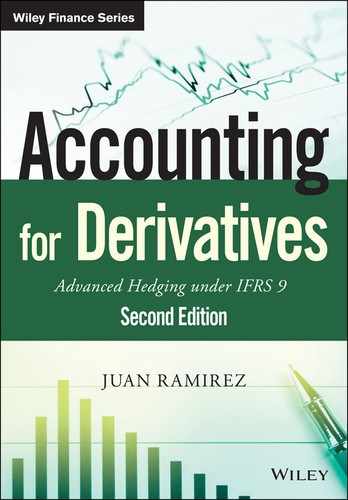Preface
The main goal of IFRS is to safeguard investors by achieving uniformity and transparency in the accounting principles. One of the main challenging aspects of the IFRS rules is the accounting treatment of derivatives and its link with risk management. Whilst it takes years to master the interaction between IFRS 9 (the main guidance on derivatives accounting) and the risk management of market risks using derivatives, this book accelerates the learning process by covering real-life hedging situations, step-by-step. Because each market risk – foreign exchange, interest rates, inflation, equity and commodities- has its own accounting and risk management peculiarities, I have covered each separately to address their particular issues.
Banks have developed increasingly sophisticated derivatives that have increased the gap between derivatives for which there is a consensus about how to apply IFRS 9 and derivatives for which their accounting is unclear. This gap will remain as long as the resources devoted to financial innovation hugely exceed those devoted to accounting interpretation. The objective of this book is to provide a conceptual framework based on an extensive use of cases so that readers can come up with their own accounting interpretation of any hedging strategy.
This book is aimed at professional accountants, corporate treasurers, bank financial engineers, derivative salespersons at investment banks and credit/equity analysts.
CHANGES TO THE PREVIOUS EDITION
The previous edition of Accounting for Derivatives was based on IAS 39. This second edition is based on IFRS 9, the accounting standard replacing IAS 39. IFRS 9 has incorporated a large number of new concepts including new hedge effectiveness assessment requirements, rebalancing and hedge ratio determination, a wider eligibility of hedged items, and a special treatment for options, forwards and cross currency swaps. New cases have been incorporated, especially in the chapters covering commodities and equity risk management. In addition three new chapters have been incorporated to the book: a chapter that provides a summary of IFRS 13 Fair Value Measurement with a special emphasis on credit/debit valuation adjustments (CVA/DVA), a chapter addressing hedging of share-based compensation plans and another chapter covering inflation risk.
